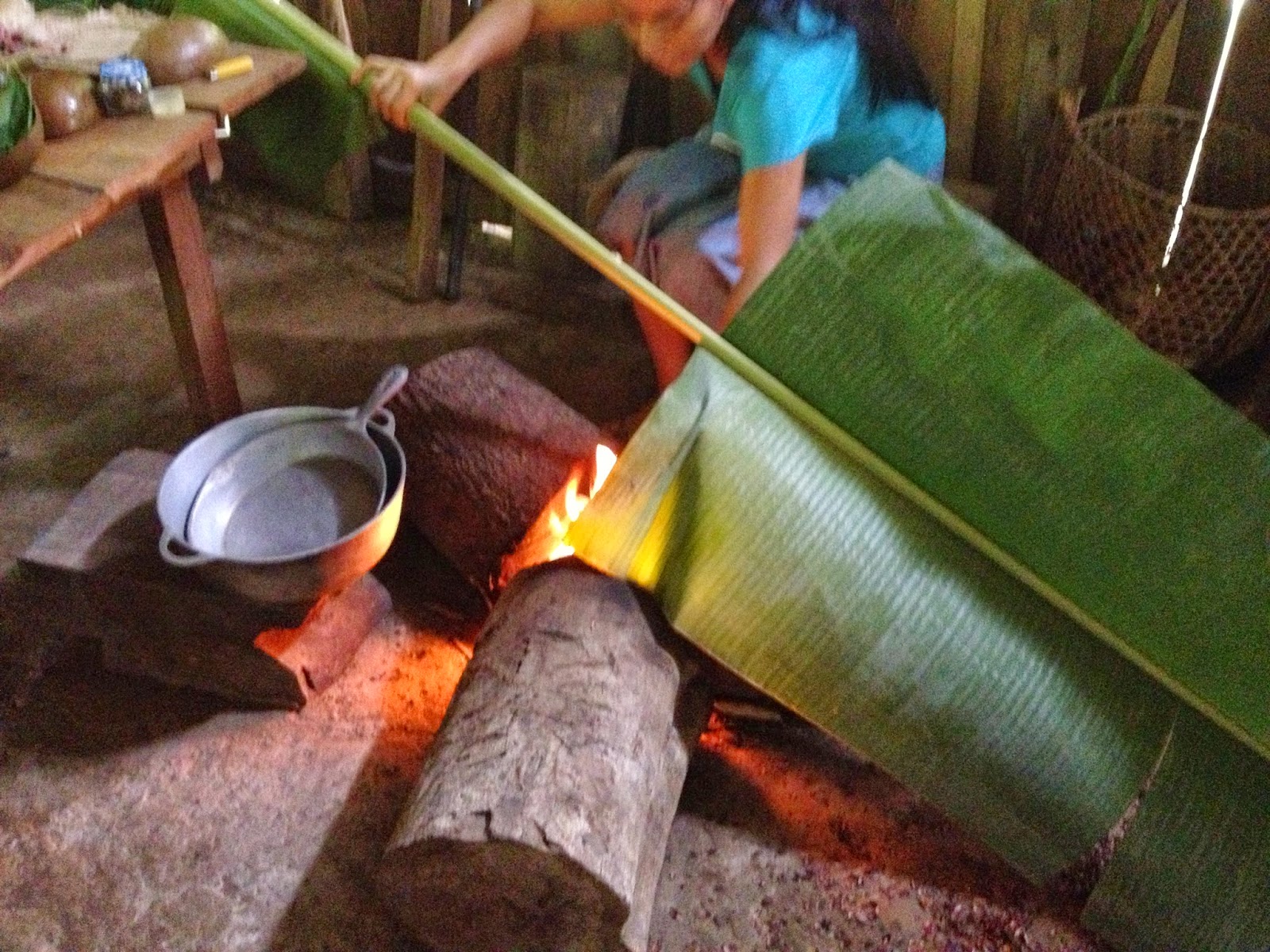How to Make Chocolate, Part 1
While staying in the small town of Cahuita on the Caribbean coast of Costa Rica, I visited a small cacao farm just to the southwest of Puerto Viejo. This farm is called the Jungles of Talamanca, and it's owned and operated by a Bribrí family who offers tours and tastings of the chocolate they make by hand. Blink and you could miss the sign:
The Bribrí is an indigenous group of people who have lived along the Caribbean coast of Costa Rica since pre-Columbian times. They live on reservation lands, although many also have inter-married into the local community. Their language is now taught in all schools within the reservation's limits, along with Spanish and English. According to our host, Priscilla, one reason that the Bribrí culture has remained largely intact is that when Spanish missionaries arrived to convert them, the missionaries decided that many Bribrí purification rituals were similar to those in the Old Testament. Although the missionaries stressed that purification was no longer necessary for those Bribrí who accepted Christ, they allowed the traditions to remain thanks to this perceived similarity to ancient Jewish culture.
This cacao farm is run by Priscilla's family. It is nestled into the hillside, just a bit off the road leading to the reservations, and only a few kilometers from Panama. Our tour began with a look at cacao trees:
Cacao trees have many teeny, tiny white flowers. These grow directly from the branch, kind of the way cherry blossoms do. These are much smaller, though--perhaps the size of my pinkie fingernail. Eventually, a pollinated flower will produce a large fruit:
This fruit is not yet ripe, even though it's almost the size of an American football. (It's the green thing in the top left corner.) When it's finally ripe, it turns a golden orange color:
Inside the big farm building, Priscilla cut open a cacao pod with a swift, neat whack of her machete. Once cracked, she gave it a twist to remove part of the shell:
And them we could see the fruit inside:
Each white section of fruit breaks off like an orange section, and each one holds one cocoa bean. We got to sample the fruit, which was smooth and white. It had a clean taste with a bit of tannin and a bit of tartness. Most people spit out the seed because it is bitter, but it's also edible, and contains proteins and nutrients. I ate it; it was bitter and fibrous, but also nutty.
Once the cacao seeds are removed from the fruit, they spend the next two weeks fermenting in a pot covered by a banana leaf:
After fermentation is complete, the beans are spread out on burlap to dry for another week:
At this point in her demonstration, Priscilla took a moment to show us how Bribrí people prepare banana leaves to use. The mature leaves are taller than she is, and are heated to make them flexible. She lit a fire on the stone floor and put the new banana leaf into the flame, moving it around over the fire and turning it to heat both sides:
As she did this, the leaf turned shiny and became very pliable, like an oilcloth or tarpaulin--the flame melts some kind of resin on the leaf. She then whacked off a square section (the leaf breaks neatly along ridges that run perpendicular to the main stem) and showed the kids how to fold it into a cup:
The Bribrí of course had much sturdier dishes at their disposal, but this type of cup would be made by women while undergoing a ritual cleansing period during childbirth. Because the Bribrí believed blood to be unclean, pregnant women in labor went into the woods to give birth alone. They built their own shelters of banana leaves and made their own cups as well. When women of the village would venture to the forest to bring food and water, they held it out with long sticks and siphoned it down a hollowed out pole into the woman's temporary leaf cup, so as not to become unclean themselves by touching her or anything she had touched.
After giving birth, the new mother and her baby remained secluded for several days, after which time the local shaman could be called to perform the ritual cleansing. (If he happened to be nearby, she was lucky; if not, she had to wait for as long as it took for him to arrive — possibly two weeks!). This cleansing required a strong tea made of bitter cacao and the aromatic bark of a tree. The woman would bathe, then the shaman would spit the tea onto her feet and bury the wet spot in fresh earth to symbolize her cleanliness and readiness to return to the village with her baby.
Priscilla's mother has seven children, all of whom were born in a hospital, because she believed that she was already purified by her acceptance of Christian beliefs. Priscilla's grandmother, however, had fifteen children alone in a banana hut in the forest, each one purified with cacao and strong enough to survive to adulthood.
I'm going to let that sink in for now. The rest of the Bribrí method of making chocolate will follow in another post.














Comments
Post a Comment